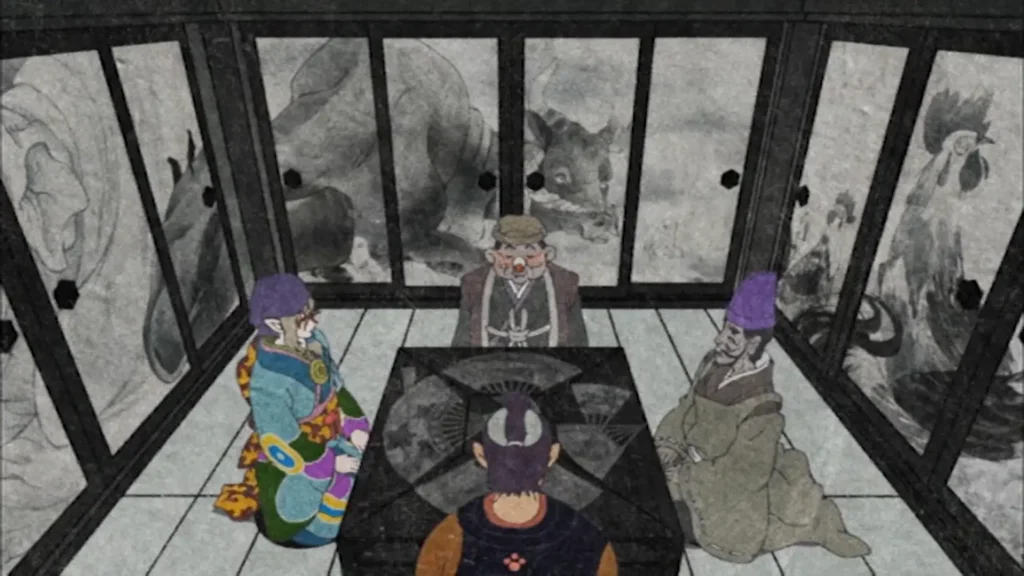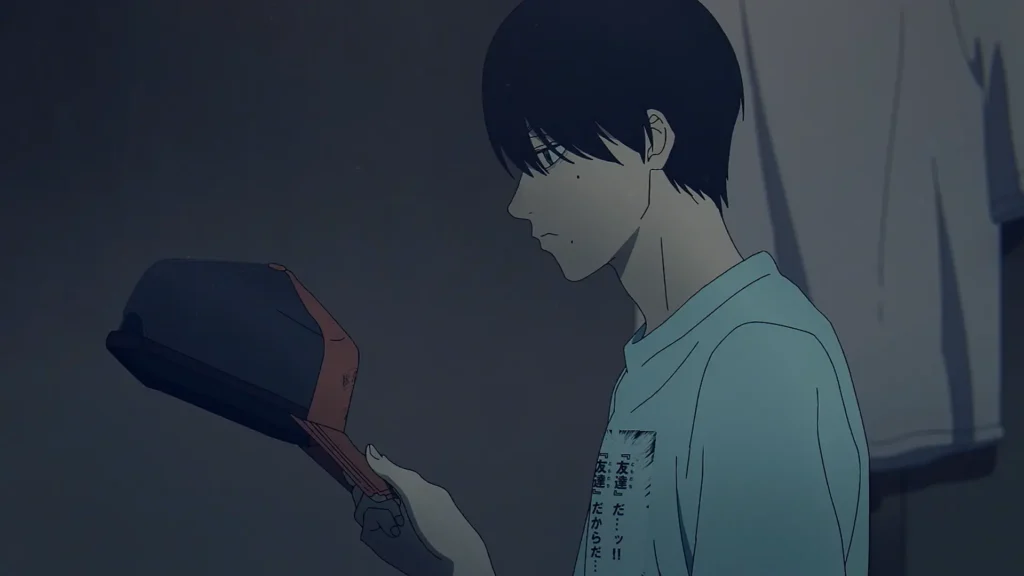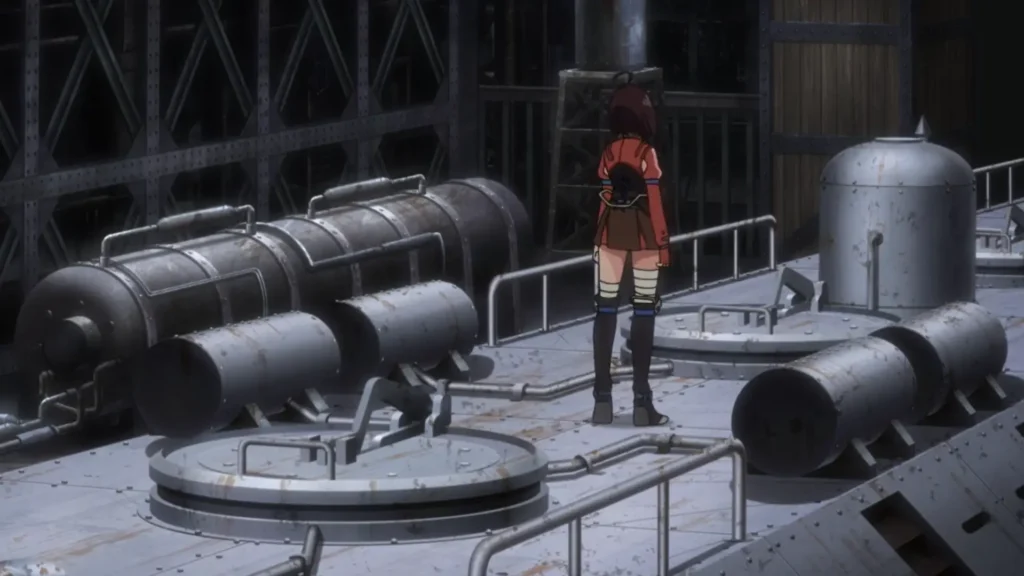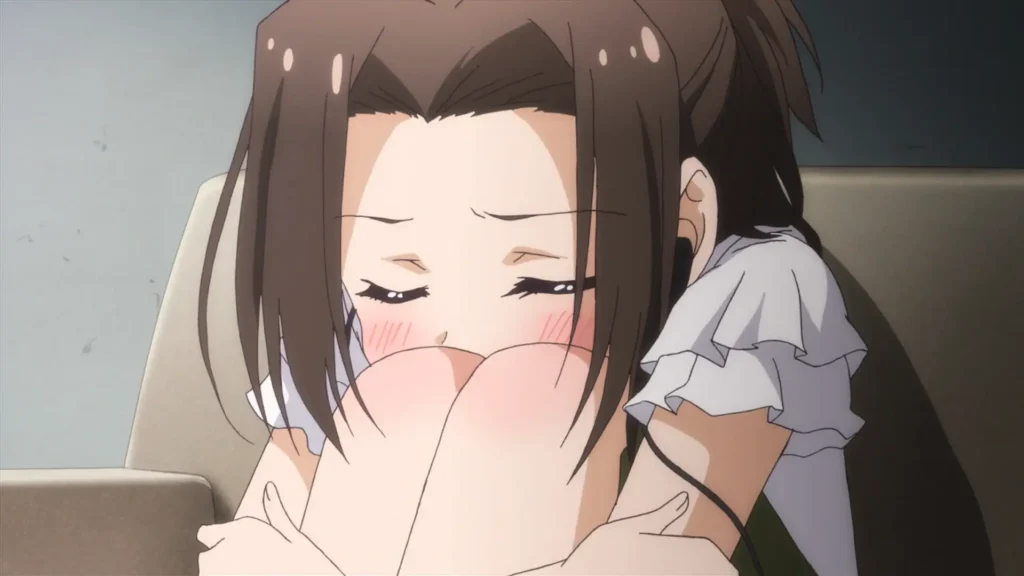While the world of anime is often celebrated for its vibrant battles and heartwarming romances, there exists a corner reserved for the horror anime. Japanese horror is distinct in its ability to blend psychological dread with visceral terror, yet many masterpieces of the genre remain hidden gems, overshadowed by mainstream giants. If you are tired of the usual recommendations and crave stories that will linger in your mind long after the screen goes dark, you’ve come to the right place. From atmospheric folklore to psychological descents into madness, here are 8 underrated horror anime that deserve a spot on your watchlist.
Mononoke
Broadcast: 2007 | Total Episodes: 12

“I beg of you, reveal to me your Truth and Reason.”
Celebrating its 15th anniversary in 2022, the horror anime Mononoke originally aired during the Noitamina block. When a new project was announced on Twitter, it immediately sparked a massive reaction from fans. In a poll covering 70 titles from Noitamina’s history, this series claimed first place; even years after its release, it continues to captivate audiences.
The story begins when a man with a mysterious, captivating appearance—known only as the Medicine Seller—appears before an inn. “I would like to borrow the inn for one night,” he requests. Struck by his demeanor, the landlady finds herself blushing. After a brief exchange, a young pregnant woman arrives seeking lodging. When the clerk informs her there are no vacancies, the woman creates a desperate scene, insisting she must stay the night. Unable to watch this unfold, the landlady guides her to a room with a sinister history—one where guests are usually forbidden.
The series is renowned for its distinctive animation style, which utilizes textures reminiscent of traditional Japanese washi paper, as well as its unique dialogue and the glamorous voice acting of Takahiro Sakurai. The visuals are vivid, offering an artistic direction that turns every episode into a spectacle. With its enigmatic storytelling and eerie atmosphere, this is the perfect recommendation for those seeking a uniquely Japanese horror experience unlike anything else.
When They Cry (Higurashi no Naku Koro ni)
Broadcast: 2006 | Season 1: 26 Eps | Season 2: 24 Eps | Season 3: 24 Eps | Season 4: 15 Eps

“Skepticism turns to terror. Terror turns to rage.”
Adapted from a doujin visual novel, When They Cry proved so popular that it spawned multiple seasons and OVAs, followed by a completely new horror anime adaptation (Seasons 3 and 4) in 2020.
The setting is the summer of 1983. Protagonist Keiichi Maebara has moved to the deserted rural village of Hinamizawa, where he enjoys a peaceful school life. One day, his friend Lena Ryugu takes him to a large garbage dump near the mountains. There, he accidentally meets a freelance photographer named Tomitake and learns of a gruesome incident that occurred in the village’s past.
Thinking it a mere joke, Keiichi tries to ask Lena—who has lived in the village for some time—about the event. Her attitude changes instantly. Later, when he asks another friend, Mion Sonozaki, if such an incident occurred, she replies with a single, chilling phrase: “It didn’t happen.” Sensing the unsettling atmosphere, Keiichi gradually loses the ability to trust anyone around him.
This series masterfully depicts the protagonist as he is consumed by fear and slowly descends into madness. The terrifying imagery strikes a chord in the viewer’s heart, while the unraveling mystery keeps them hooked. This is highly recommended for those who want a horror anime with a deep, complex narrative.
Tokyo Ghoul
Broadcast: 2014 | Seasons 1–4: 12 Episodes each

“Once you eat ‘that,’ you can never go back to being human.”
Based on the manga by Sui Ishida, horror anime Tokyo Ghoul became a sensation on social media during its broadcast, largely due to Mamoru Miyano’s extraordinary vocal performance. It also served as the catalyst for Natsuki Hanae’s rise to popularity, following his later success in Demon Slayer.
The story is set in Tokyo, a city infested by “Ghouls”—beings who blend in with the population but feed on human flesh. The protagonist, Ken Kaneki, frequents a coffee shop called “Anteiku.” There, he meets an exceptionally attractive woman named Rize Kamishiro. Discovering they share a favorite novelist, they arrange a date at a bookstore. Although nervous, Kaneki manages to get through the date safely. On the way home, he summons his courage to confess his feelings. Rize leans in close, whispering, “I like you, too,” before the moment shatters. In the next instant, Kaneki feels an agonizing pain in his shoulder.
This series portrays Kaneki’s agonizing struggle as he exists in the liminal space between human and Ghoul. The appeal lies in Natsuki Hanae’s harrowing performance—so intense you might want to cover your ears—and the graphic visual depictions that make you want to look away. The final episode of the first season is particularly gruesome, so viewer discretion is advised. It is a compelling tale of tragedy and awakening.
The Summer Hikaru Died (Hikaru ga Shinda Natsu)
Broadcast: 2025 | Season 1: 12 Episodes | Season 2: In Production

“Stay with me, even if you’re a fake.”
This youth horror series is a stunning anime adaptation of Mokumokuren’s popular manga, which boasts a cumulative circulation of over 3.5 million copies. CygamesPictures brings the source material’s world to life with high-quality animation and delicate direction by director Ryohei Takeshita. The unique atmosphere, where refreshing daily life intersects with eerie terror, deeply shakes the viewer’s emotions.
The story revolves around two childhood friends, Yoshiki Tsujinaka and Hikaruiki, who grew up in a suffocatingly closed-off rural settlement. One day, Hikaru goes missing in the mountains for a week; when he returns, something about him has clearly changed. In truth, he has been replaced by a “Something” (Nanika) that has taken his form.
Although bewildered, Yoshiki accepts this “Something” and works with it to investigate its true identity and the strange incidents occurring in the village. As they approach mysteries such as the “Kubitachi,” “Nounuki-sama,” and the “Sins of the Kido Family,” the relationship between the two deepens.
The series is characterized not by jump scares, but by its careful depiction of the characters’ psychology and emotional fluctuations. The passionate performances by Chiaki Kobayashi and Shuichiro Umeda, along with the sound design and music, function as vital elements that heighten immersion. This is recommended for those seeking a new experience fusing youth drama with horror.
Kabaneri of the Iron Fortress
Broadcast: 2016 | Total Episodes: 12

“Live, even if you must die.”
With a premise reminiscent of the zombie genre, Kabaneri of the Iron Fortress features an opening theme by EGOIST and an ending theme by Aimer with chelly. In addition to the TV series, the franchise includes two compilation films and one feature film with a new story.
The setting is Hinomoto, an island nation in the Far East. To counter the sudden appearance of undead monsters known as “Kabane,” humanity has built fortresses called “Stations” to live in. Travel between these stations is only possible via reinforced steam locomotives known as “Hayajiro,” which transport goods and maintain a semblance of life.
The protagonist, Ikoma, is a boy who seeks to fight the Kabane rather than flee from them. He dreams of defeating them with a weapon of his own invention, the “Piercing Gun” (Tsuranuki Zutsu). One day, the Kotetsujo (Iron Fortress)—one of the Hayajiro locomotives—crashes out of control into Ikoma’s station. Hordes of Kabane pour out from within. While others flee in panic, Ikoma stands his ground, raising his Piercing Gun.
Set in a transition period from the early modern to the modern era, the anime features WIT STUDIO’s signature fluid animation and a powerful soundtrack. The tension of never knowing when the Kabane will strike keeps the story gripping. This is highly recommended for fans of high-quality action horror.
School-Live! (Gakkougurashi!)
Broadcast: 2015 | Total Episodes: 12

“Isn’t that window broken?”
Following a shocking first episode that was distributed on Nico Nico Douga, School-Live! became a viral topic on social media. The gap between its cute character designs, slice-of-life aesthetic, and its jarringly dark themes creates a unique viewing experience.
Yuki, Kurumi, Rii-san, and Miki are members of the “School Living Club,” a group ostensibly dedicated to getting accustomed to various school facilities that aren’t usually covered in class. They live a fun school life, sharing hardtack and harvesting cherry tomatoes in the rooftop garden.
Yuki, whose childish behavior often soothes the group, falls asleep alone during class, making the classmates around her laugh. amidst this routine, they receive news that the club’s dog, Taromaru, has gone missing. Miki barges loudly into the classroom despite the lesson being in session. Flustered by Miki’s behavior, Yuki joins the search for Taromaru.
Based on the manga drafted by Norimitsu Kaiho (Nitroplus) with art by Sadoru Chiba, School-Live! builds an unsettling atmosphere through small incongruities and the terror lurking beneath everyday life. It is an excellent recommendation for those who want a compelling horror narrative without relying on excessive gore.
Diving into these series offers more than just a momentary fright; it provides a window into complex narratives exploring the fragility of the human psyche and the monsters—both supernatural and human—that lurk within. Whether you prefer the slow burn of a psychological thriller or the adrenaline of survival horror anime, this list proves that the genre has a depth often overlooked by casual viewers. So, turn off the lights, grab a blanket, and prepare yourself for an unforgettable experience. Did we miss a hidden gem that kept you up at night? Share your favorite underrated horror anime picks in the comments below!
Latest Article: 3-Episode Special of “My Happy Marriage” Slated for 2026